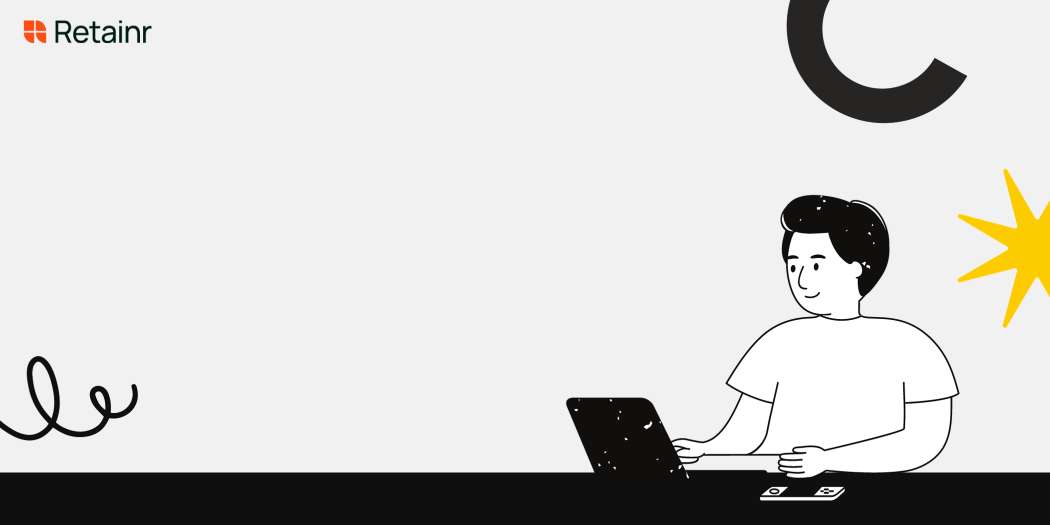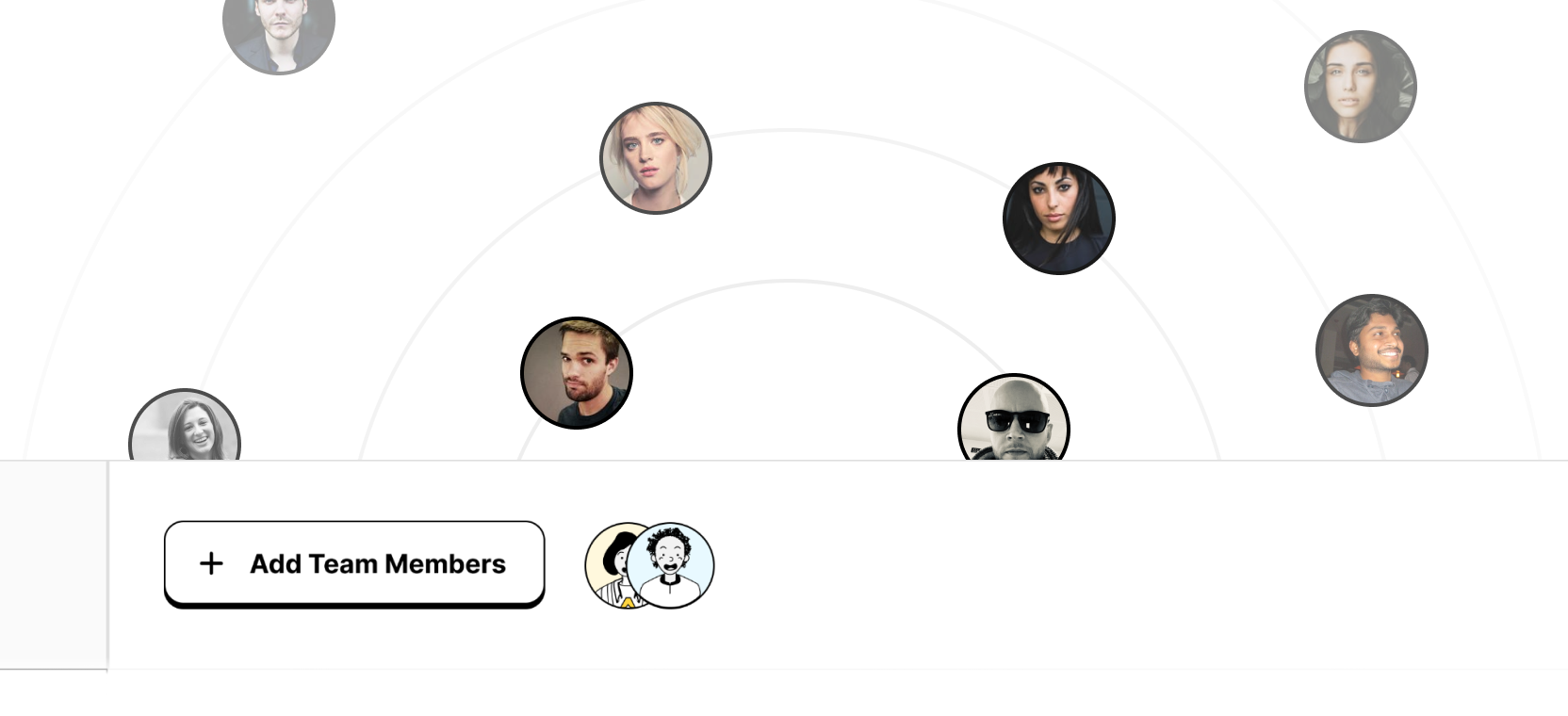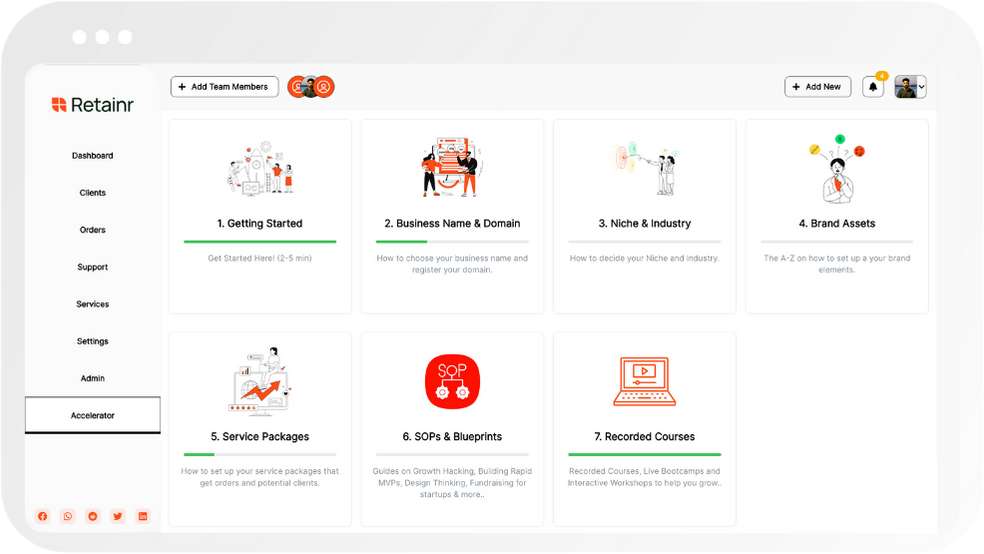
5 Tips for Managing Client Feedback in Freelance Projects
Build with Retainr
Sell your products and services, manage clients, orders, payments, automate your client onboarding and management with your own branded web application.
Get Started1. What are the top five tips for managing client feedback in freelance projects?
Understanding the Importance of Client Feedback
Managing client feedback effectively is a crucial aspect of any freelance project. It has a direct influence on the project's success rate. The process entails sorting, prioritizing, and implementing feedback from clients. Therefore, understanding the criticality of feedback can aid in enhancing your work quality. Here are some tips:
- Establish clear communication channels: Be sure to give your clients multiple avenues to express their thoughts and concerns about the project.
- Ask for specific feedback: The more precise the feedback, the better you can address it. Make sure your clients understand the importance of providing comprehensive and detailed inputs.
- Don’t take the feedback personally: It's essential to maintain a professional attitude when it comes to client feedback. They are not criticizing you but pointing out areas that may require improvement.
- Ensure to ask for positive feedback too: This can assist you in understanding what you are doing well and continue doing it.
- Utilize feedback tools: Tools such as Google Forms, Trello, or Asana can be used for taking and organizing feedback efficiently.
Feedback Management Tactics
In addition to collecting and processing feedback, how you manage it also plays a vital role in ensuring customer satisfaction and improving your workflow. Following these tactics can help simplify the task:
| Tactic | Description |
|---|---|
| Organization | Organize the feedback in a manner that is easy for you to handle: by urgency, importance, or area of expertise. |
| Tracking | Consider using a tracking system to follow the progress of implementing each feedback point. |
| Timely Response | Ensure to acknowledge and respond to each feedback item promptly to maintain good relations with the client. |
Turning Feedback Into Action
After collecting and organizing feedback, it's now time to put it into action. Here are the steps you might want to consider:
- Review feedback: Ensure that you fully understand what the client needs and clarify any ambiguities.
- Plan of action: Create a clear and concise action plan detailing how and when you will implement the changes.
- Discuss your plan: Relay your plan to the client to ensure your interpretations and solutions align with their expectations.
- Implement changes: Make the necessary adjustments to your work based on the approved plan.
- Follow-Up: Once changes have been implemented, follow up with your client for their feedback to ensure their satisfaction.
2. How can I effectively communicate with my client when discussing feedback on a freelance project?
Understanding Communication Techniques
Effective communication with your client entails active listening, respect for their views, transparency, and clarity in your response. Firstly, always ensure you listen to your client attentively without interrupting them, aiming to comprehend their perspective fully. Secondly, respect your client's views, even if you disagree with their feedback. Approach disagreements diplomatically and professionally. Thirdly, maintain transparency. Your client should be aware of the work's progress and any potential obstacles. Finally, aim for clarity in all your responses. Avoid industry jargon and tailor your language to your client's level of understanding.
Employing Email Etiquette
Email is commonly used for feedback discussion due to its convenience. To communicate effectively via email, consider the following tips:
- Subject Line: Use clear, concise subject lines that summarize the email content.
- Format and Style: Use short sentences and paragraphs for easy reading. Bullet points and numbered lists are great for breaking down complex instructions or feedback.
- Politeness and Tone: Ensure your language is polite and your tone professional. United States with criticism or negative feedback, it can soften the blow.
- Proofread: Always proofread your emails before sending. Spelling mistakes or grammar errors can reflect poorly on your professionalism.
Handling Video Calls or Face-to-face Meetings
In certain scenarios, video calls or face-to-face meetings might be used for feedback discussions. The following tips can guide you for effective communication in these settings:
| Aspect | Recommendation |
|---|---|
| Preparation | Before the meeting, jot down all the points you want to discuss. This ensures you do not miss anything during the conversation. |
| Listening | Pay full attention to what the client is saying. Avoid multitasking during the meeting. |
| Body Language | Display positive body language. Maintain eye contact and demonstrate that you are fully engaged in the conversation. |
| Clarity | Ask clarification for any points you do not understand. Repeat the client's feedback in your own words to ensure you have captured it accurately. |
3. What tools can I use to organize and manage client feedback in a more efficient way?
Online Tools to Manage Client Feedback
There are several online tools that can help you organize and manage client feedback in a more efficient way. Some of the most popular ones include Trello, Slack, and Google Docs. Trello is a project management tool that allows you to create boards for different projects, where you can add different cards for each task. Clients can add their feedback directly on these cards, making it easy to track and manage. Slack, on the other hand, is a communication tool that allows for instant and organized conversations with your clients. You can create different channels for different projects, and clients can provide their feedback in real-time. Google Docs is a collaborative tool where you can create, share, and edit documents with your clients. They can add their feedback directly on the document, making it easy to implement their suggestions.
Using Spreadsheets to Organize Feedback
Spreadsheets can also be a useful tool to organize and manage client feedback. You can create a dedicated feedback spreadsheet for each project, using columns to categorize feedback according to its nature (e.g., design issues, content mistakes, functionality problems, etc.). Each row could represent a different piece of feedback, with additional columns for client name, date received, the status of the issue (fixed or pending), and notes. This method provides a visual overview of all feedback, making it easy to see at a glance what needs to be addressed.
| Client Name | Date Received | Issue | Status | Notes |
|---|---|---|---|---|
| John Doe | 08/18/2021 | Design issue with the banner | Pending |
Specialized Feedback Management Systems
Several specialized tools are designed specifically to manage feedback more efficiently. Two of these include Userback and Usersnap. Userback allows clients to provide visual feedback directly on your live website or design work, with annotations and comments. Usersnap offers similar features, along with bug tracking, user surveys, and customer satisfaction monitoring. These tools offer a more advanced, feedback-focused feature set than general project management or communication tools.
Note: These tools usually come with a monthly subscription, but they can be worth the investment if managing client feedback becomes a significant part of your workload.
4. How can I ensure that I am correctly interpreting client feedback on my freelance project?
Communicating Clearly for Precise Interpretation
One of the key methods to ensure accurate interpretation of client feedback is via clear and regular communication. This can be facilitated through regular meetings, emails, or phone calls. Avoid making assumptions; if you're unsure about something, ask for clarity. Always reflect back by paraphrasing or summing up what you understand the client's feedback to be, to ensure there's no miscommunication.
- Regular Meetings: Regular meetings can be an effective method for understanding the client's feedback as this can be discussed in detail and areas of ambiguity can be addressed immediately.
- Emails: Written communication can allow for reflection and make sure both parties are on the same page.
- Phone Calls: Sometimes, a quick phone call can help to clarify any uncertainties. With the client's permission, these calls can be recorded for future reference.
Using Specific Tools for Capturing Client Feedback
There are numerous tools available that can help in capturing and understanding clients' feedback. These tools can assist in organizing feedback, set priorities and even serve to clarify feedback. Using the right tools can greatly assist in ensuring that you're correctly interpreting client feedback. Here are three examples:
| Tool | Description |
|---|---|
| Trello | Trello allows you to create boards for each project where feedback can be uploaded, explained, and prioritized. |
| Asana | It's an excellent tool for assignment tracking, progress reporting, and capturing feedback in one place. |
| Slack | Slack provides real-time communication, file sharing, and ensures that feedback is received and interpreted appropriately. |
Maintaining a Positive Mindset
To ensure accurate interpretation of client feedback, maintain a positive and open mindset. Don't let criticism affect you negatively but see it as an opportunity to learn and improve. Always remember that feedback is aimed at your work, not you personally.
- Be open-minded: This will allow you to be more receptive to feedback and view it from the client's perspective.
- Be patient: There may be instances where clarifying feedback may consume time, keep in mind the ultimate aim is to deliver a project that aligns with your client's vision.
- Continuous Learning: Each feedback is a new opportunity to learn and improve in your profession.
5. Are there any strategies for dealing with negative feedback from clients on freelance projects?
Handling Negative Feedback
Facing negative feedback can be challenging but understanding it as part of the process helps. Here are a few key strategies:
- Don't Take It Personally: You must learn to separate criticism from personal attacks and respond professionally.
- Be Responsive: Promptly acknowledging the comments shows you value the client’s opinion.
- Ask for Clarification: If a client’s feedback is vague, don’t hesitate to ask for clarification to ensure you understand their expectations.
- Present Solutions: Instead of focusing on the problem, think about potential solutions or improvements and present these to the client.
- Keep Your Cool: It's crucial to stay calm, even in the face of harsh criticism.
Feedback Management Plan
Implementing a detailed feedback management plan can be very helpful in dealing with negative comments. Here's a simple, yet effective model:
| Steps | Responsibilities |
|---|---|
| Receive Feedback | Read, understand and acknowledge the client’s observation |
| Analyse Feedback | Determine whether the feedback is constructive or destructive |
| Respond to Feedback | If it’s constructive, thank the client and consider how to implement the suggested changes. If it's destructive, try to understand the client's perspective and respond respectfully and professionally. |
| Implement Changes | Make necessary modifications to the project as per the constructive criticism |
| Follow-up | Check with the client to ensure they are satisfied with the changes |
6. How can I professionally disagree with a client’s feedback on my freelance project?
Understand the Client's Perspective
When a client gives feedback that you disagree with, it's important first to understand where they're coming from. This helps in making sure that your response will be both respectful and informed. Listen carefully to their concerns and try to see things from their point of view. Remember, they might have insights into their target market or industry that you don't.
- Ask clarifying questions: If you're unclear about any point of the feedback, don't hesitate to ask.
- Empathize: Let the client know you understand their concern.- even if you disagree.
- Be patient: Don't rush to respond. Take time to fully understand the issue.
Explain Your Point of View
You can disagree professionally by backing up your opinion with facts and your expertise's weight. Explain your decisions while being careful not to attack the client's opinion. Constructive discussion can lead to a better understanding for both parties. Avoid confrontational language, and be concise in your explanation.
| What to do | What not to do |
|---|---|
| Present facts | Be confrontational |
| Explain with clarity | Be dismissive |
| Listen to the client's response | Ignore the client's opinion |
Offer a Compromise
If there’s still disagreement after explanation, offering a compromise could be the best solution for both parties. A compromise will allow you to maintain your professional integrity while valuing the client's input. This could take the form of blending elements from both ideas or testing different versions. In doing this, both you and the client feel that your opinions have been respected.
- Discuss different possibilities.
- Offer to make tweaks rather than significant changes.
- Be ready to test out different solutions and gather data.
7. How much consideration should I give to client feedback when working on a freelance project?
Client Feedback Importance
Client feedback is vital in any freelance project. It not only helps in aligning project expectations but also aids in ensuring customer satisfaction. As a freelancer, you have to give significant consideration to client feedback, but it's also essential to balance it with your expertise and judgment. Here's why:
- Improves service delivery: Client feedback provides insight into what you are doing correctly and what needs improvement. This helps in enhancing your service delivery and increasing client satisfaction.
- Helps build relationships: Responding to client feedback shows that you value their opinion, which helps in cultivating strong relationships.
- Guides your decision making: Feedback from clients can guide your project decisions, making the final output more effective and satisfactory.
Managing Client Feedback
Managing client feedback effectively is crucial to a project's successful implementation. It involves taking into account all their comments, sorting them out, and using them to refine and improve your work. Below are five tips on how to do this:
- Always maintain open communication: Encourage your clients to provide feedback throughout the project to prevent any surprise criticism at the end.
- Use a feedback management tool: Utilize online tools to receive, classify, and manage the feedback you receive.
- Negotiate changes carefully: If a client suggests drastic changes that you disagree with, negotiate carefully to find a solution that satisfies both parties.
- Know when to push back: Recognize that not all feedback is constructive. You're the expert in your field; stand your ground when necessary.
- Learn from the feedback: Use feedback to learn and grow. Every project can be a learning experience to improve future works.
Consideration Level of Client Feedback
The level of consideration you give to client feedback can greatly vary project by project. Here's a simple table breaking down different scenarios:
| Feedback Type | Level of Consideration |
|---|---|
| Minor Adjustment Suggestion | Moderate |
| Major Design/Content Change | High |
| Feedback Inconsistent with Project Goals | Low - But must be tactfully communicated |
Ultimately, the level of consideration will depend not just on the feedback itself, but also on your expertise, understanding of the project, and the kind of relationship you have with the client.
8. Should I change my work based solely on a client's feedback, even if I don't agree with it?
Considering Client's Feedback v/s Creativity in Freelance Projects
In the freelance world, maintaining a balance between your creativity and client feedback can be incredibly crucial. Is it right to transform the work entirely based on a client's recommendations, even if they seem incompatible with your viewpoint? What should one do in such situations? Here are five essential tips to help you manage this situation efficiently.
- Understand the Client's Perspective: Your client generally knows their audience better. Therefore, their opinions might be worth considering even if they contrast your creative vision.
- Communicate: If you believe their feedback could compromise the quality of work, communicate your viewpoints in a polite and professional manner, backing it up with logical reasoning.
- Find a Middle Ground: If both viewpoints seem valid, find a compromise that integrates both ideas without diluting the project's effectiveness.
- Value Your Expertise: You are hired for your expertise. The client values your skills, so stay confident about your work and maintain a stand when necessary.
- Know When to Let Go: If there are too many clashes on creative decisions, the project might not be appropriate for you or the client. Know when to decline and move on.
Keeping a Feedback Record
Maintaining a record of feedback can be insightful for current and future projects. It will help you understand client perspectives, enhance your skills, and build credibility over time. Below is a simple table structure to record and manage client feedback.
| Date | Client | Project | Feedback | Action taken |
|---|---|---|---|---|
| 01/01/22 | ABC | Logo Design | More vibrant colors required | Added brighter hues |
| 12/02/22 | XYZ | Website Design | Improve loading speed | Optimized images and scripts |
9. What kind of system should I put in place to track and manage client feedback?
Implementing a Client Feedback Tracking System
Managing client feedback involves implementing an effective system that streamline processes and enhance workflow. This system should be able to accurately track and efficiently manage client's feedback. Here are some practical tips for establishing this type of system:
- Consolidate Feedback: Ensure the system can collect and consolidate feedback from various portals like email, social media, or direct website queries.
- Prioritize Tasks: The system should allow for the prioritization of tasks based on the feedback. This aids in addressing the most crucial concerns first.
- Monitor Updates: The set system should be able to monitor updates and changes made in response to feedback.
Software Options for Feedback Tracking
One may contemplate on the idea of using an ideal tool or software that supports the tracking and managing of client feedback. Some of these software include:
| Software | Features |
|---|---|
| Monday.com | Collaboration tools, project tracking, feedback management |
| Jira | Bug tracking, issue tracking, project management |
| Asana | Work mapping, project management, collaboration tools |
Regular Updating and Reviewing
To keep up with the effectiveness and efficiency of the implemented system, regular reviewing and updating is crucial. This includes:
- Regular System Check: Running a regular check on the system ensures that it is functioning as expected.
- System Updates: Ensure regular updates of the system to keep up with technological advances, and to keep the system secure.
- Feedback Review: Regularly reviewing the feedback collected helps in business growth. Keep track of trends and patterns in the feedback to better understand your client's needs.
10. Is there a way I can anticipate and avoid negative feedback from clients in my freelance projects?
Avoiding Negative Feedback
Anticipating and avoiding negative feedback is possible with the right strategies. A preventive approach not only helps mitigate potential problems but also keeps your relationships with clients amicable. Here are five tips that can assist with managing client feedback effectively.
- Set Clear Expectations: Document everything from deliverables, time frames, to payment terms, and get your client's agreement. This clarity avoids misunderstandings later.
- Communicate Regularly: Clients appreciate being kept in the loop. Regular updates on project status keep them involved and give them a sense of control.
- Deliver Quality: Simply put, when your output is of high quality, there's less room for negative feedback. Ensure you produce your best work consistently.
- Be Open to Feedback: Sometimes, feedback may seem negative, but it can lead to improvement. Be willing to accept it and adjust your approach accordingly.
- Ask for Feedback: Don't wait for negative feedback to come in. Regularly seek your client's opinion on your work and make tweaks where necessary.
Here's a simple table showcasing the strategies in a glance:
| Strategy | Description |
|---|---|
| Set Clear Expectations | Clarify what is expected from both sides to avoid confusion |
| Communicate Regularly | Keep the client involved in the process with regular updates |
| Deliver Quality | Ensure your output is of the highest possible standard |
| Be Open to Feedback | Accept and act on all feedback, positive and negative |
| Ask for feedback | Don't wait for feedback, actively seek it |
Conclusion
Managing client feedback effectively is a crucial part of any freelance projects. Here are five tips that can help freelancers to streamline this process:
Active Listening
Active listening is the key to understanding your client’s needs and expectations. Pay attention to their words, tone, and body language, and ask clarifying questions if needed.
Transparent Communication
Transparency in communication helps to strengthen the client-freelancer relationship. Always be open and clear about the project's progress, challenges, and milestones.
Document Everything
Having everything documented helps in avoiding any future misunderstandings. Recording all the client's feedback and your responses to them can be a great reference for both parties.
Manage Expectations
Manage your client's expectations from the start. Define a clear feedback process including the frequency of feedback sessions, how they will be conducted, and how the suggestions will be incorporated.
Use the Right Tools
Using the right tools such as project management software helps to manage client feedback efficiently. One such software is Retainr.io. Sold as a white-label app, it enables freelancers and businesses to manage clients, orders, payments, and feedback effectively. You can have your own branded app, simplifying the client management process and adding a professional touch to your freelance work.
Try it out for yourself at www.retainr.io and enhance your freelance project management!
Boost Your Agency Growth
with Retainr Accelerator
Uncover secrets, strategies, and exclusive blueprints to take your agency's growth to the next level — from marketing insights to effective presentations and leveraging technology.

SOPs, Cheatsheets & Blueprints
Leverage 50+ SOPs (valued over $10K) offering practical guides, scripts, tools, hacks, templates, and cheat sheets to fast-track your startup's growth.
Connect with fellow entrepreneurs, share experiences, and get expert insights within our exclusive Facebook community.
.jpg)

Join a thriving community of growth hackers. Network, collaborate, and learn from like-minded entrepreneurs on a lifelong journey to success.

Gain expertise with recorded Courses, Live Bootcamps and interactive Workshops on topics like growth hacking, copywriting, no-code funnel building, performance marketing and more, taught by seasoned coaches & industry experts.

.jpg)

.jpeg)


